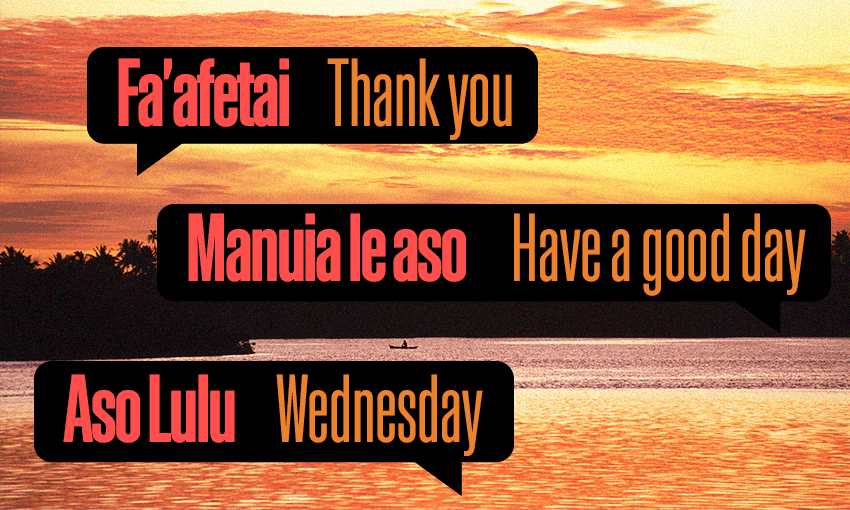With a dearth of Sāmoan teachers in schools, a free online and interactive beginners’ course of the language and culture has made a timely entrance in Aotearoa.
It started two years ago at a barbecue. Lead adviser for Pacific education and engagement at the Ministry of Education (looking after the top half of the South Island) Jason Tiatia was chatting away with head of kaupapa Māori at Education Perfect, Te Rau Winterburn, about how he was looking for something new.
At the time, Tiatia was a Sāmoan language teacher at Ara Institute of Canterbury (now Te Pūkenga) for beginner and intermediate level students. He had been in the role for nearly eight years. Winterburn had an idea for what Tiatia should do next. He suggested creating a Sāmoan language course for Education Perfect. While te reo Māori resources have grown exponentially in the past decade, Sāmoan language resources remain relatively slim, with no staple learning books or immersive courses.
Education Perfect is a behemoth education resource provider in New Zealand. It sells digital learning resources for teachers to use in their classrooms, as well as resources for homeschooling parents. The company is currently used in more than 750 schools in Aotearoa, including 85% of secondary schools. In June, it acquired an Australian mathematics resource company for $40m. Sāmoan is now the first Pacific language course on the Education Perfect platform, sitting alongside 10 other language courses.
Tiatia was interested in creating the resource, but as he started putting together ideas for the course, he was offered a job at the Ministry of Education, which created a direct conflict of interest. So Tiatia passed the project back to Education Perfect and suggested a few experts and Sāmoan language tutors to continue his work.
Education Perfect received funding from the Ministry of Education to create the resource, a free beginner Sāmoan language and culture course available to schools nationwide who register for the course. The National Sāmoan Language Teachers Association (FAGASA) contributed guidance over the language and cultural aspects to the supplementary course, which helps preserve and promote the Sāmoan language for future generations.
The course consists of 30 lessons, which includes content such as the alphabet, days and months, White Sunday and Siva Sāmoa (dance). Being an interactive digital tool for learning the language, students can record themselves practising words and phrases on their devices to build their confidence. For many Sāmoans born in New Zealand, learning the language comes from parents or other elders, and can be a daunting experience. “What’s great about this course is that you learn in a safe space,” Tiatia says. “We aim to make sure the learners are having fun with games and challenges and are carefully nurtured along their journey of learning a language.”
Despite Sāmoan being the third most spoken language in Aotearoa, there is currently a shortage of Sāmoan language teachers in the country. The availability of this course fills a crucial gap, allowing students to explore their heritage and celebrate Fa’ Sāmoa in their learning spaces and at home.
Education Perfect’s New Zealand curriculum specialist Justin Paul sees a great opportunity for many more Pacific languages to follow suit. “UNESCO has classified te reo Māori Kūki ʻĀirani (Cook Islands), te gagana Tokelau, te gagana Tuvalu and Vagahau Niue as endangered or vulnerable, so we hope with the Sāmoan course, it’s the beginning for those languages to be included so that we can support other Pacific communities in preserving their languages,” he says.
According to data from the Ministry for Pacific Peoples, the percentage of New Zealanders under the age of five who speak their heritage language across all Pacific groups is concerningly low at 16%. There has been a noticeable drop in the number of Pasifika people fluent in their mother tongue over the past 15 years, with a huge decline on lea faka Tonga or Tongan language. Contributors to the decline of Pacific language usage in Aotearoa include the perception that English is the language of success, low perceived value of Pacific languages and low rates of intergenerational transmission.
This new course also offers valuable learning opportunities for teachers, aligning with the cultural competency framework for teachers of Pacific students (Tapasā) and the Action Plan for Pacific Education 2020-2030. While Sāmoan teachers are invaluable for their cultural knowledge and lived experience, the beginner Sāmoan language course can be taught by a qualified teacher of any ethnicity as the resource includes audio pronunciation guides, video demonstrations and English instructions and explanations.
The course launched on Sāmoan language week this year and interested teachers need to register online to access the free course.
This is Public Interest Journalism funded through NZ On Air.



